WHAT TO KNOW WHEN BUYING EYEGLASSES FOR CHILDREN
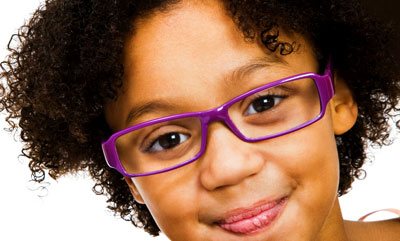
Getting kids to wear eyeglasses for the first time is a potentially traumatic experience for both parent and child. It’s a whole new – and initially restrictive – way of looking at the world. A youngster’s world that is one, big rough-and-tumble of joyful games, grand adventures and roughhouse play.
Once the ophthalmologist has handed over the prescription, the onus of selecting the best suitable pair of spectacles is on the parents. To make this selection process easier, we have created a list of useful tips that will help you make your kid more comfortable with the awkward, new accessory perched on his/her nose.
1. How Thick is The Lens?
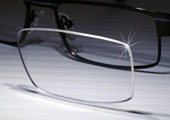 Lens thickness is a prime concern when selecting the most practical pair of glasses for your child. If the prescription is for a thick lens, then keeping the frame small in size can balance out some of that extra weight. Also, with smaller lens, there is less chance of the child experiencing blurred or distorted peripheral vision.
Lens thickness is a prime concern when selecting the most practical pair of glasses for your child. If the prescription is for a thick lens, then keeping the frame small in size can balance out some of that extra weight. Also, with smaller lens, there is less chance of the child experiencing blurred or distorted peripheral vision.
2. Does it Sit Well on The Nose Bridge?
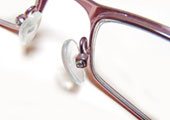 A pair of eyeglasses that fits improperly on the nose bridge will keep sliding off, and children may develop a habit of looking over the glasses instead of pushing them up. But the problem is this: their nose bridges are not fully developed. To avoid this problem with fit, make sure that there is an adjustable nose pad, or the shape of the metal/plastic frame is a snug, comfortable fit before making a purchase.
A pair of eyeglasses that fits improperly on the nose bridge will keep sliding off, and children may develop a habit of looking over the glasses instead of pushing them up. But the problem is this: their nose bridges are not fully developed. To avoid this problem with fit, make sure that there is an adjustable nose pad, or the shape of the metal/plastic frame is a snug, comfortable fit before making a purchase.
3. How Firmly do the Spectacle “temples” Stay in Place?
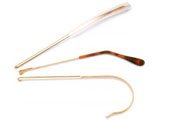 Temples or handles on a pair of eyeglasses come in several shapes. For example, Library temples and Skull temples. For young kids, especially toddlers, extra-long and curly “cable temples” — also known as Riding/Cable Bow — that wrap around the ear is a good choice, as they stay firmly in place and don’t slide off easily.
Temples or handles on a pair of eyeglasses come in several shapes. For example, Library temples and Skull temples. For young kids, especially toddlers, extra-long and curly “cable temples” — also known as Riding/Cable Bow — that wrap around the ear is a good choice, as they stay firmly in place and don’t slide off easily.
4. Are the Hinges Flexible?
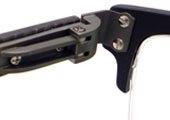 Standard hinges, or barrel hinges, are most common, as they are durable and easy to repair. Spring hinges, however, afford greater flexibility when putting on and taking off glasses. For children, who cannot always be careful with their eyewear, spring hinges keep the frame from getting skewed or even broken.
Standard hinges, or barrel hinges, are most common, as they are durable and easy to repair. Spring hinges, however, afford greater flexibility when putting on and taking off glasses. For children, who cannot always be careful with their eyewear, spring hinges keep the frame from getting skewed or even broken.
5. How Suitable is the Lens Material for Children?
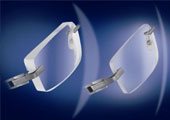 Look for lenses made of Polycarbonate or Trivex, as these are way more sturdy and durable than other materials. Also, they are lighter, scratch-resistant and have built-in protection against damaging UV rays. Avoid the potential injury hazards of choosing breakable glass lenses for kids.
Look for lenses made of Polycarbonate or Trivex, as these are way more sturdy and durable than other materials. Also, they are lighter, scratch-resistant and have built-in protection against damaging UV rays. Avoid the potential injury hazards of choosing breakable glass lenses for kids.
6. Have you Ordered a Spare Pair?
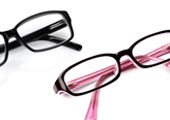 A child, especially one who’s learning to adjust to an alien, unexpected accessory, is ten times more likely to lose, break or scratch their glasses than an average adult. Keeping a spare pair handy is a good idea, because you don’t have to worry about an immediate replacement when the first pair is damaged.
A child, especially one who’s learning to adjust to an alien, unexpected accessory, is ten times more likely to lose, break or scratch their glasses than an average adult. Keeping a spare pair handy is a good idea, because you don’t have to worry about an immediate replacement when the first pair is damaged.
7. Have you Thought About Warranty?
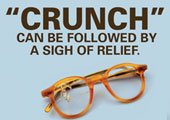 Many optical retail stores offer warranties on their glasses. As children’s eyewear is expected to sustain more wear and tear, a warranty can save you a pile of money in the long run. Remember, not all warranty plans are equal, so check the specific repair and replacement criterions before opting for one.
Many optical retail stores offer warranties on their glasses. As children’s eyewear is expected to sustain more wear and tear, a warranty can save you a pile of money in the long run. Remember, not all warranty plans are equal, so check the specific repair and replacement criterions before opting for one.
